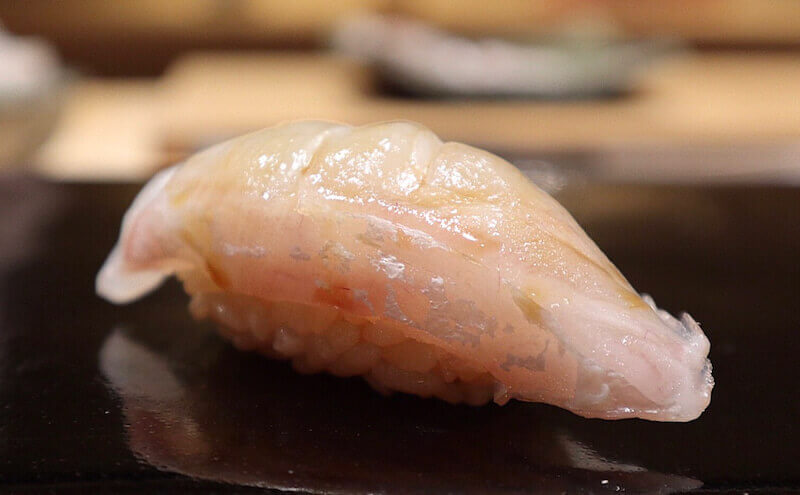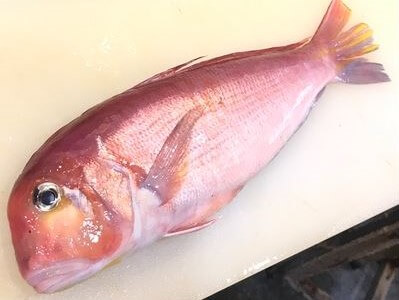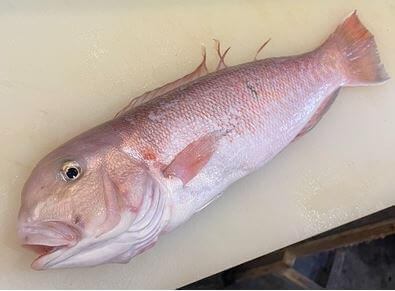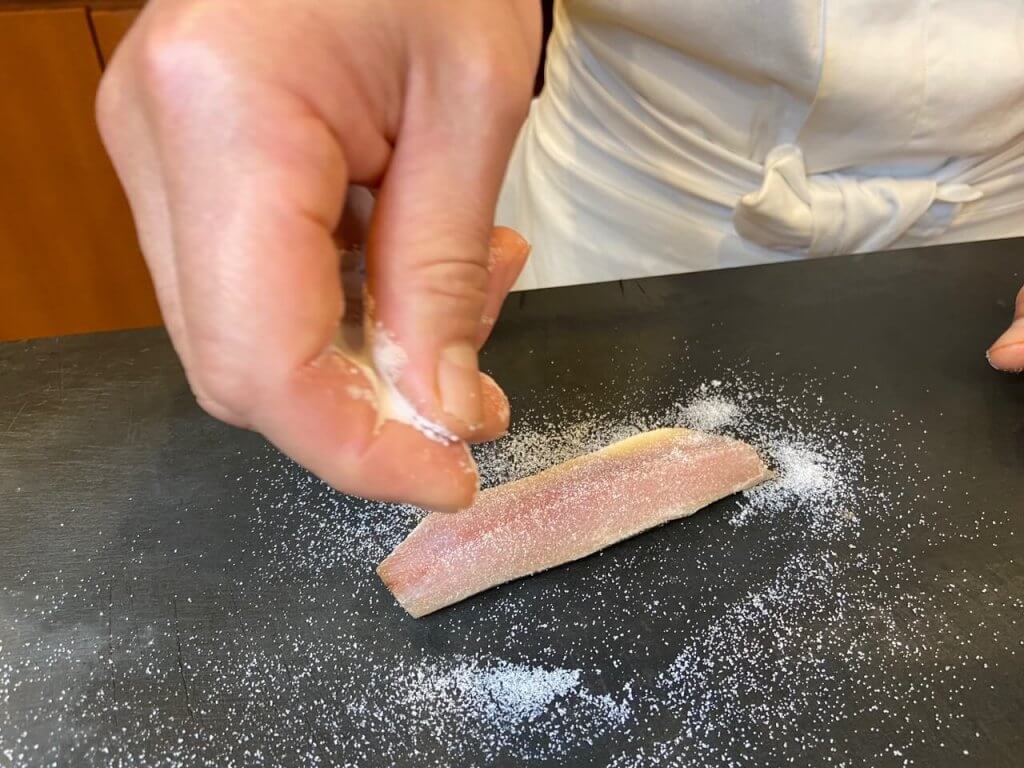 Out of the five types of Amadai that live in Japan, Aka-amadai, Shiro-amadai and Ki-amadai are the three types offered in the markets.
Out of the five types of Amadai that live in Japan, Aka-amadai, Shiro-amadai and Ki-amadai are the three types offered in the markets.
 The main characteristics of Aka-amadai are its overall red body, the bright yellow color under the eyes and how part of its fin is a shiny cobalt blue color. Aka-amadai is called “Guji” in the Kansai region and is a vital part of Kyoto cuisine. Ki-amadai has the same silhouette and size as Aka-amadai, but the Ki-amadai has more yellow color in its face and tail fin. They tend to prefer sandy seafloors at depths of 30 to 300 m and live deeper than any other type of Amadai. True to its name, Shiro-amadai is a white color (Shiro means ‘white’) so is also called Shirakawa (which means ‘white skin’).
The main characteristics of Aka-amadai are its overall red body, the bright yellow color under the eyes and how part of its fin is a shiny cobalt blue color. Aka-amadai is called “Guji” in the Kansai region and is a vital part of Kyoto cuisine. Ki-amadai has the same silhouette and size as Aka-amadai, but the Ki-amadai has more yellow color in its face and tail fin. They tend to prefer sandy seafloors at depths of 30 to 300 m and live deeper than any other type of Amadai. True to its name, Shiro-amadai is a white color (Shiro means ‘white’) so is also called Shirakawa (which means ‘white skin’).
 Shirakawa is considered to be the finest of the Amadai and can cost more than US $100 per kilogram. Aka-amadai costs around US $40 per kilogram. Shirakawa always ranks in the top three fish for market price. Shirakawa has more elasticity than the other two and has rich fat, making it perfect as sashimi or a sushi topping. The umami is so strong that even when served raw, the customer sometimes thinks it’s been prepared using kobujime. The fat between the meat and the skin is sweet and the skin is delicious in its own right, so it can even be eaten as sashimi with the skin left on. The famous production sites include Tsushima in Nagasaki Prefecture and Yawatahama in Ehime Prefecture. They are in season from autumn to winter. However, they say in a catch of 1,000 Amadai, you can only get one Shirakawa, so it is a rare item you won’t often see, even in a high-end sushi restaurant.
Shirakawa is considered to be the finest of the Amadai and can cost more than US $100 per kilogram. Aka-amadai costs around US $40 per kilogram. Shirakawa always ranks in the top three fish for market price. Shirakawa has more elasticity than the other two and has rich fat, making it perfect as sashimi or a sushi topping. The umami is so strong that even when served raw, the customer sometimes thinks it’s been prepared using kobujime. The fat between the meat and the skin is sweet and the skin is delicious in its own right, so it can even be eaten as sashimi with the skin left on. The famous production sites include Tsushima in Nagasaki Prefecture and Yawatahama in Ehime Prefecture. They are in season from autumn to winter. However, they say in a catch of 1,000 Amadai, you can only get one Shirakawa, so it is a rare item you won’t often see, even in a high-end sushi restaurant.
[sc_apply url=”https://sushiuniversity.jp/apply/”]
We hope this information will be helpful.

Revision date: October 5, 2021
Share this article
